This week’s Hammer of Math takes a look at the narrative side of things and the impact of core rulebook Battle Traits and Psychic Fortitudes in the Crusade system.
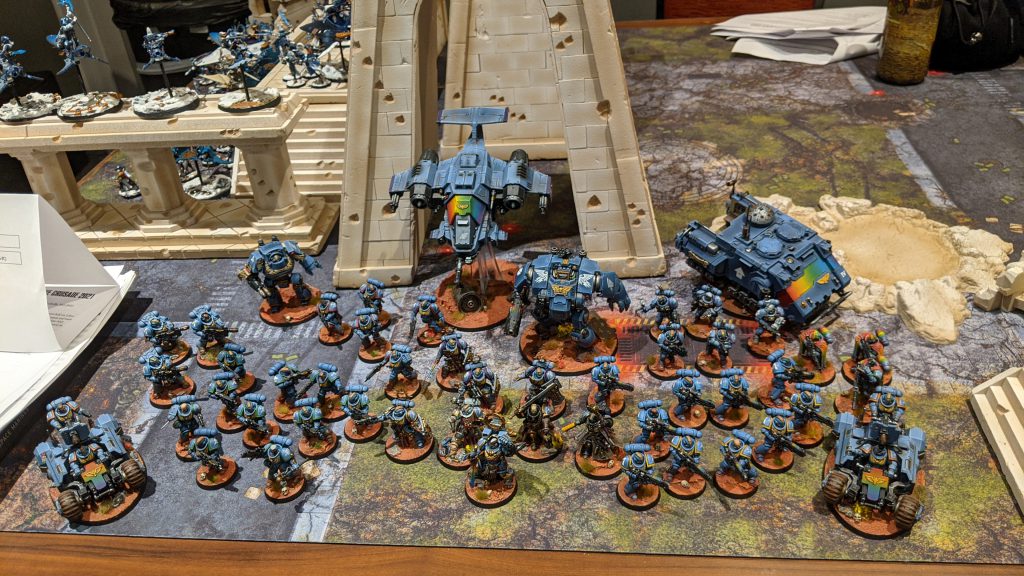
The core of the Crusade system (outside of epic stories and having fun with awesome people) is the application of experience to develop your units. Much like in a RPG, experience gained via Agendas and fighting show the progress of a unit and is the gateway by which they can advance and achieve Battle Honours. Once a player advances they have to decide how to best advance their heroes. Do they purchase a Crusade Relic? Get a Battle Trait (by either choosing or rolling the dice as per the Goonhammer Open)? Or look at the unique bonuses of their faction?
In this article and next week’s we’ll take a look at the various Battle Traits, Psychic Fortitudes, Weapon Enhancements, and Crusade Relics available to players from the core book. In the future we’ll try to look at faction and campaign specific content, but for now we’ll stick to the things that everyone can access. This week will look at Battle Traits and Psychic Fortitudes, and next week will look at Weapon Enhancements and Crusade Relics.
Battle Traits
The intent of the Battle Trait system is to give your units the opportunity to advance and set themselves apart from rest of the army, either through a random result on a D6 or choosing the option that “tells the best narrative for your unit”. Personally I find any system that relies exclusively on random chance to advance a unit to be rather distasteful, as I’m not a big fan of units getting advancements that provide no benefit (such as a unit that ignores wounds getting a trait that does the same thing). The Battle Trait system consists of four charts that depend on the type of unit being advanced. The four charts apply to Characters (except Vehicles/Monsters), Vehicles, Monsters, and everybody else.
Swift and Agile / Unstoppable / Enhanced Engine / Fleet of Foot: All four charts start with an option that significantly increases mobility. All units gain a bonus to their Movement characteristic (2″ to Vehicles/Monsters, 1″ to everyone else) and an additional inch to Advance and charge rolls. Mobility is always useful in an objective and Agenda oriented game like 9th Edition, particularly for melee-oriented units which can see a significant improvement in the probability of making a charge as seen in the chart below.
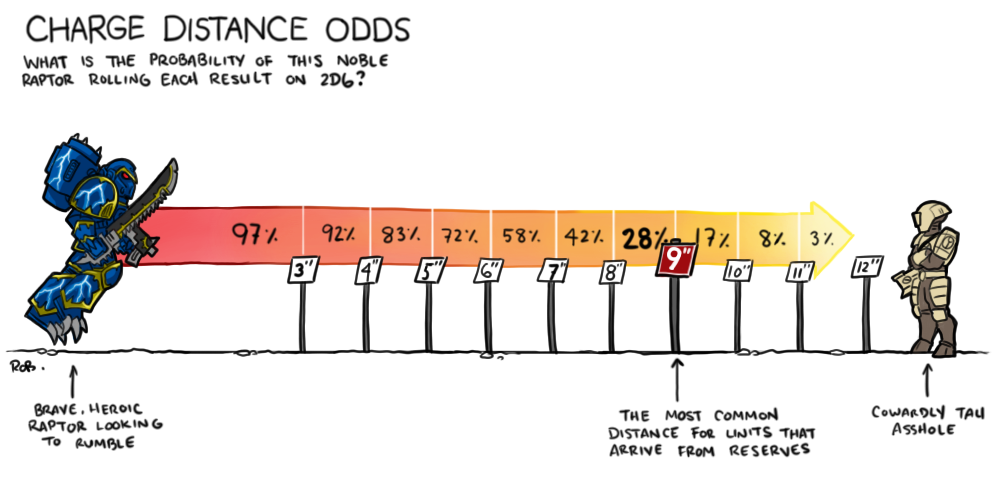
Apex Predator / Elite Crew / Armourbane / Veteran Warriors: All of these bonuses for Monsters, Vehicles, and other non-Character units are a fixed re-roll of 1 to wounds or hit rolls. This provides a flat 17% improvement to the average wounds dealt to the target, as a natural 1 is always a failure. In the event where the hit and wound re-rolls are stacked the net effect is a 36% improvement.
Deadly Charge / Frenzied: Characters and Monsters gain a bonus attack when they charge, were charged, or perform a heroic intervention. The impact of this bonus is dependent on the number of attacks the unit started with. Assuming the unit already had five or more attacks, the improvement in average wounds dealt is actually less than a bonus to hit or wound.
Resilient / Grizzled / Blessed Hull: Non Vehicle/Monster units gain access to the ability to ignore wounds on a 6+, which effectively gives the units 20% more wounds. Vehicle units gain the ability to ignore mortal wounds on a 5+, which effectively increases the number of wounds (against relevant attacks) by 50% over having no save at all.
Repair Systems / Regenerates: Monsters and Vehicles can regain 1 lost wound at the start of each Command phase. Assuming the model’s army goes second this results in a maximum of 5 additional wounds, although that would assume the model is wounded every round. Although unlikely to allow the unit to survive, it does provide the possibility of moving up a wound bracket and increasing the lethality of the unit.
Thickened Hide / Improved Shielding: Vehicles and monsters can add 1 to saving throws (not invulnerable) made against attacks with an AP of 0 or -1. The utility of this bonus depends on the starting save of the model, but the chart below provides some guidance on the impact. For the most part armies tend to avoid inconveniencing monsters and vehicles with small-arms fire.
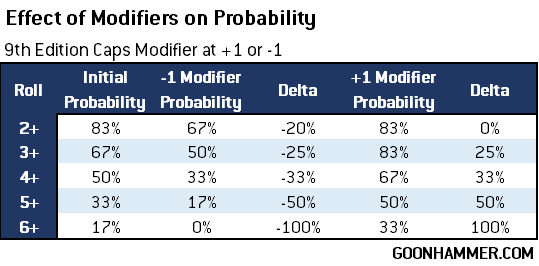
Headhunters: This bonus is available to “other units” and basically turns them into Raven Guard (meaning that actual Raven Guard are less enthused by this ability since modifiers to Hit and Wound are capped). The effects of the bonus can be referenced in the chart above, but in general this has a significant impact on most units as
Heroic Constitution: Characters get a bonus wound through this trait. The effectiveness of this bonus depends on the starting number of wounds and the kind of attacks that are threatening the character. If the model started with 5 or more wounds then the ability to ignore damage is more effective.
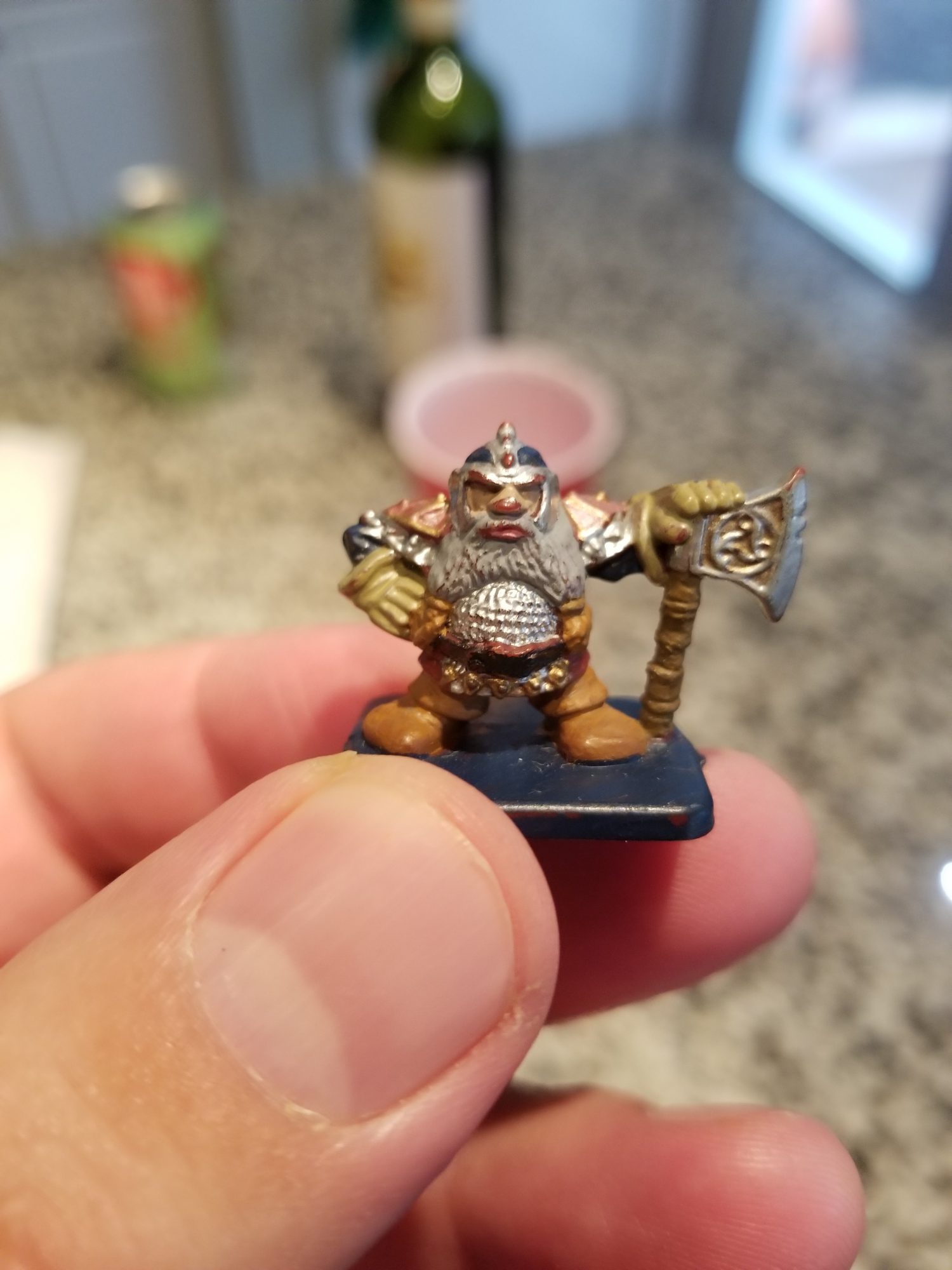
Inspiring Hero: Characters can add 1 to the Leadership characteristic of nearby units and double the range of Heroic Interventions. The bonus to Heroic Interventions can be nasty against opponents that don’t expect it, and the bonus to Leadership means one additional model has to die before a moral test will occur. This is definitely the kind of bonus that is appropriate for a model at the front lines, especially ones that have other Aura bonuses like Space Marine Captains.
Tactical Expertise: Character models can regain 1 CP if they roll a 6 on a D6 every time they spend a CP to use a Stratagem. We’ve covered the math on this before, and you basically need to use four rolls before you have a better than even chance of getting a CP back. As per the core book you can only regain 1 CP per round, regardless of the source.

Terrifying: Monster units force enemy units within 6″ to roll two dice when taking a Morale test and discard the lowest. This squares the probability of success as you must now roll below the target number on both dice, and the impact can be seen in the chart below.
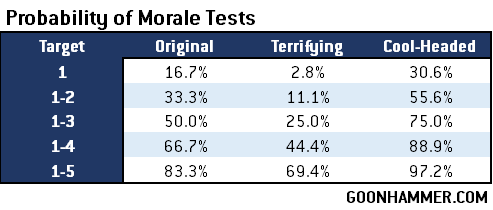
Cool-headed: “Other” units with this bonus get two significant abilities. First they can re-roll failed Morale tests, the impact of which can be seen in the chart above. Second, they somehow reverted to 8th Edition and can freely fire Overwatch AND hit on a 5+. Not bad unless your unit only has melee weapons.
Battle-tested: A three-part bonus for “other” units, this trait grants the unit Objective Secured, allows them to attack with ranged weapons while performing an Action without the action failing, and also automatically passes Combat Attrition tests while within range of an objective marker. The Objective Secured bonus is an example of older rules since it provides no bonus to units that already have that ability. Maybe GW thinks the other bonuses are sufficient, or maybe GW doesn’t really focus on correcting narrative content the way they focus on matched play. My guess is the latter, as the only part of the Crusade content in the Core rulebook that has been FAQ’d is an errata to the Master-Crafted Armour Crusade Relic.
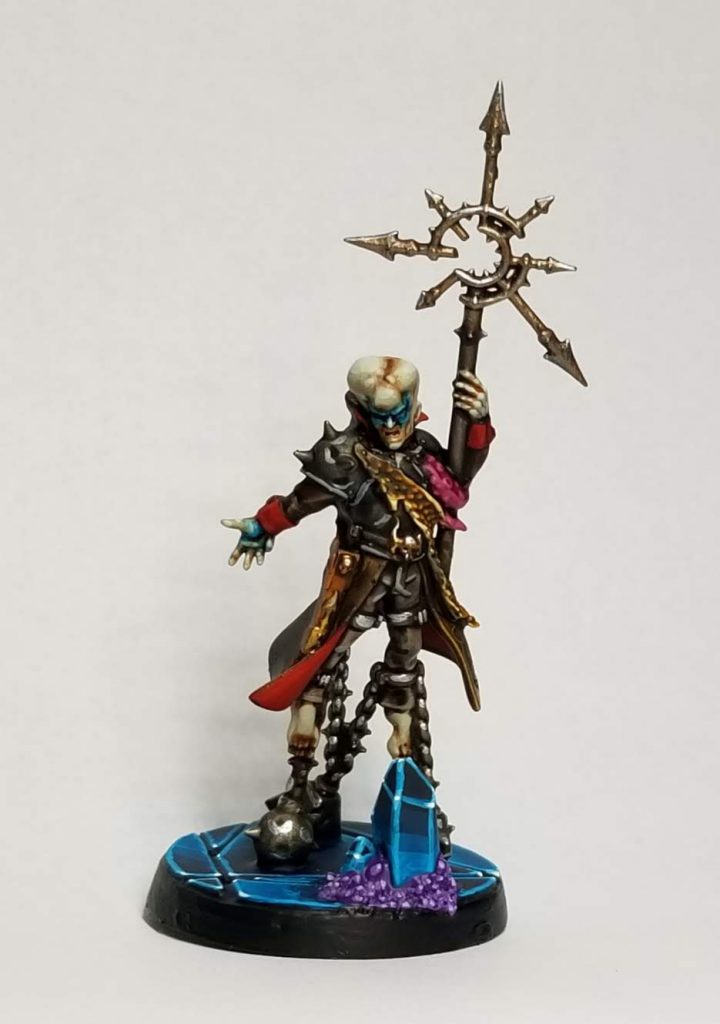
Psychic Fortitudes
Compared to Battle Traits Psychic Fortitudes is a significantly less diverse area with only three options on a single chart.
Psychic Might allows the psyker to manifest one additional psychic power per Psychic phase, although the psyker needs to know enough powers to make this relevant.
Adamantium Will increases the number of psychic powers the unit can deny in the opponent’s Psychic phase by 1.
Master of Lore allows the unit to know an additional psychic power from one of the disciplines available to them. Note that per the Core Rulebook FAQ there are limitations on what discipline the model can access based on the options that were selected when the Datasheet was created.

Wrapping Up
The impact of Battle Traits is heavily dependent on whether you are required to roll a D6 or have the option to choose the most appropriate benefit. In campaigns where there’s a solid chance I can roll something useless I would be more inclined to pick a Weapon Enhancement or Crusade Relic. In campaigns where players can pick the trait there are certainly a lot of good ones, particularly for ‘other’ units which will generally get less out of Relics or Weapon Enhancements. Next week we’ll look a those.
Thanks for reading! If you have any feedback, feel free to drop a note in the comments below or email us at contact@goonhammer.com. If you have any questions that you would like answered in a future article like this one, please submit them here.


